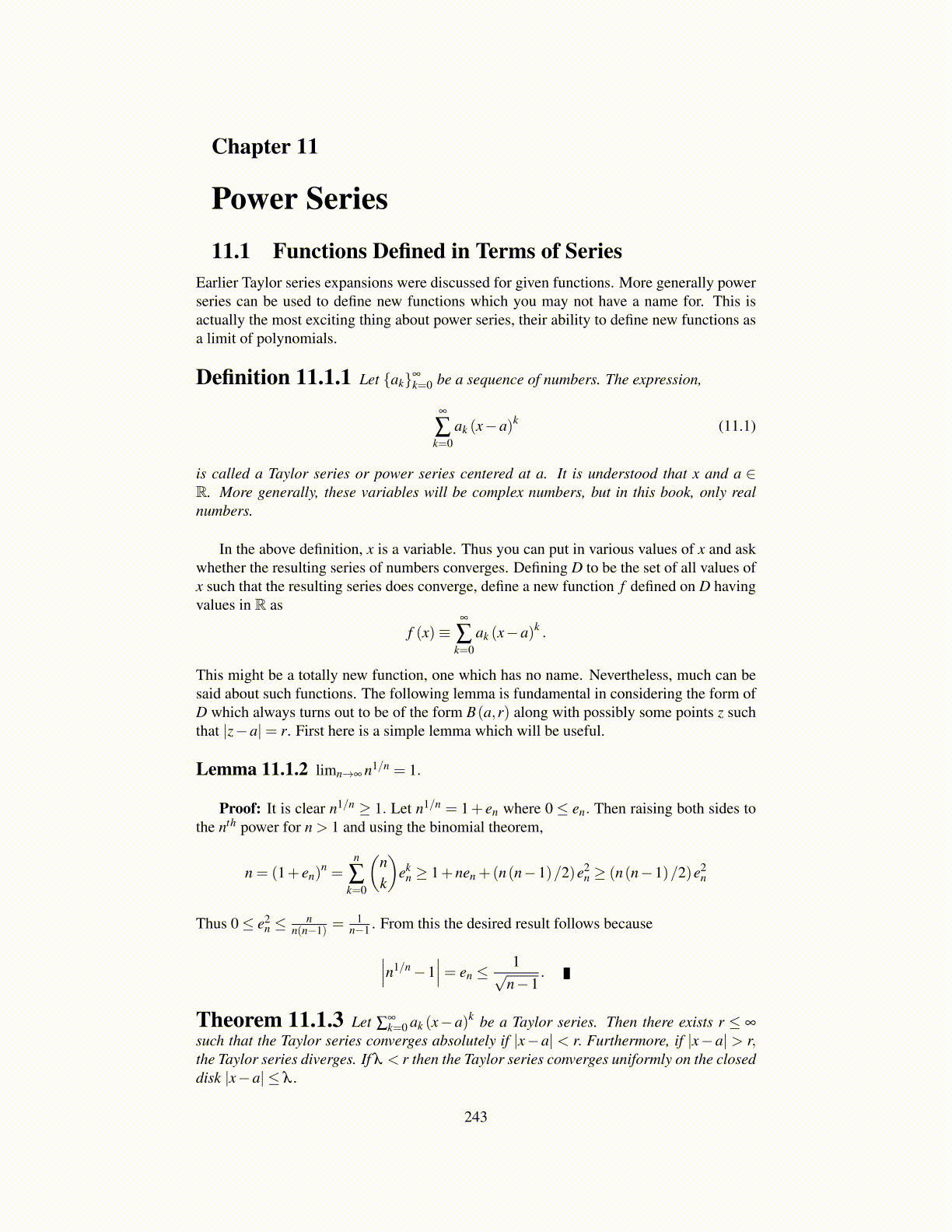
Chapter 11
Power Series11.1 Functions Defined in Terms of Series
Earlier Taylor series expansions were discussed for given functions. More generally powerseries can be used to define new functions which you may not have a name for. This isactually the most exciting thing about power series, their ability to define new functions asa limit of polynomials.
Definition 11.1.1 Let {ak}∞
k=0 be a sequence of numbers. The expression,
∞
∑k=0
ak (x−a)k (11.1)
is called a Taylor series or power series centered at a. It is understood that x and a ∈R. More generally, these variables will be complex numbers, but in this book, only realnumbers.
In the above definition, x is a variable. Thus you can put in various values of x and askwhether the resulting series of numbers converges. Defining D to be the set of all values ofx such that the resulting series does converge, define a new function f defined on D havingvalues in R as
f (x)≡∞
∑k=0
ak (x−a)k .
This might be a totally new function, one which has no name. Nevertheless, much can besaid about such functions. The following lemma is fundamental in considering the form ofD which always turns out to be of the form B(a,r) along with possibly some points z suchthat |z−a|= r. First here is a simple lemma which will be useful.
Lemma 11.1.2 limn→∞ n1/n = 1.
Proof: It is clear n1/n ≥ 1. Let n1/n = 1+ en where 0 ≤ en. Then raising both sides tothe nth power for n > 1 and using the binomial theorem,
n = (1+ en)n =
n
∑k=0
(nk
)ek
n ≥ 1+nen +(n(n−1)/2)e2n ≥ (n(n−1)/2)e2
n
Thus 0 ≤ e2n ≤ n
n(n−1) =1
n−1 . From this the desired result follows because
∣∣∣n1/n −1∣∣∣= en ≤
1√n−1
.
Theorem 11.1.3 Let ∑∞k=0 ak (x−a)k be a Taylor series. Then there exists r ≤ ∞
such that the Taylor series converges absolutely if |x−a| < r. Furthermore, if |x−a| > r,the Taylor series diverges. If λ < r then the Taylor series converges uniformly on the closeddisk |x−a| ≤ λ .
243